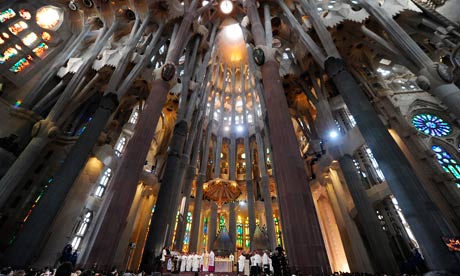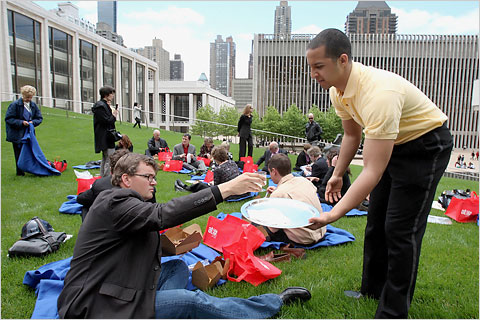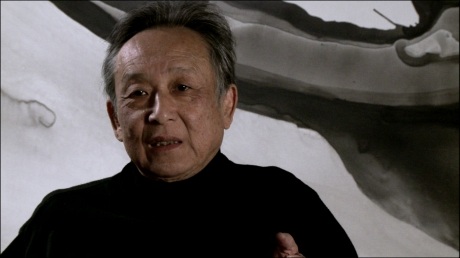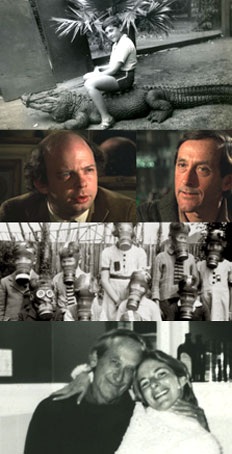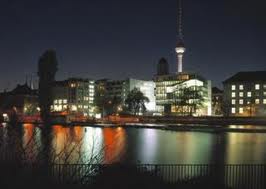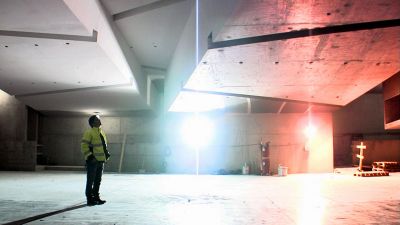Montreal Serai’s cultural critic
*****
Le Siecle de Cartier-Bresson. France, 2012. Pierre Assouline.
Whoever has seen photographs of Gandhi’s funeral, Nehru’s meeting with Lord Mountbatten and his wife Edwina, the liberation of Paris or other landmarks of the 20th Century has certainly seen samples of Henri Cartier-Bresson’s work. Henri Cartier-Bresson (1908-2004) was born in France into a rich pedigreed family. He was in his thirties when he decided to become a photographer after desultory attempts at other occupations. His cherished Leica, which he painted black so as to make it less conspicuous, became an extension of his eyes. For Cartier-Bresson, being able to see the world around him and capture an instant in eternity was the most important prerequisite for a photographer. His favorite medium was black-and-white photography, although he also worked with color and films. He is considered to be the father of photojournalism and one of the most important witnesses of the turmoil and changes that have characterized the 20th Century.
Assouline, to use today’s parlance, was able to channel Cartier-Bresson’s life and times in this moving film composed of Cartier-Bresson stills, film footage and voice archives.
*****
March 21, Montreal.
La Sagrada Familia is the name of a church that has been under construction in Barcelona since the end of the 19th Century. The length of its construction time should not surprise anybody since most European cathedrals have been built over generations. This particular church is unique in that its design strays away from rigid Euclidian geometry and follows nature’s organic designs more closely. At least, this is what happened ever since Gaudí, well know Catalan architect (cf. FIFA 30,) was invited to work on it. Gaudi derived his inspiration for the outer structure from the Montserrat mountains in Catalonia. His inspiration for the supporting pillars and the ceiling vaults were trees and their canopies.
Antonio Gaudí (1852-1926), like Picasso and Dalí, was born in Catalonia into a working class family and died a pauper. But his genius –and single minded devotion to this project- did not go unrecognized. There is a movement in his home province towards his beatification because his designs are like God’s: no two creations are identical.
This marvellous documentary recounts the history of the cathedral, the vicissitudes it passed through during two world wars, the different architects, engineers, artisans, workmen and citizens involved in its financing and construction, the philosophy behind the structure and the enormous pride and love of the people of Barcelona for this iconic structure. One such person is Japanese sculptor Etsuro Sotoo who has been working on one of the facades for decades. A devout Zen Buddhism practitioner, he converted to Catholicism in order to better understand where Gaudí stood and see the world from his perspective.
Gaudí was fond of saying that God is in no hurry. But you should be. Hurry to beg, borrow or steal this DVD. Or better still, book your passage to Barcelona.
*****

Diller Scofidio + Renfro: Reimagining Lincoln Center and the High Line. United States, 2012. Muffie Dunn, Tom Piper.
Railway lines promoted the rapid industrialization of many countries but also gobbled-up valuable green spaces. They originally acted as a boundary between the affluent and the less fortunate who lived on the wrong side of the tracks. With the de-commissioning of many railway lines in cities, the latter are regaining green spaces for transportation (cycling, walking), recreational (roller skating) and aesthetic (trees, flowers) purposes. In modern societies with more democratic aspirations, these abandoned railway tracks act as a trait d’union bringing citizens closer to each other.
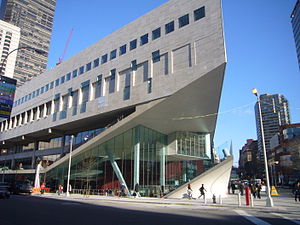 Marriages promote closeness between couples. They can also strengthen professional ties. Such is the case of Elizabeth Diller and Ricardo Scofidio, formerly student and teacher, who at some point in their lives got married, set up their architectural firm and later invited Charles Renfro to join them. Hence the “+” sign in their company name.
Marriages promote closeness between couples. They can also strengthen professional ties. Such is the case of Elizabeth Diller and Ricardo Scofidio, formerly student and teacher, who at some point in their lives got married, set up their architectural firm and later invited Charles Renfro to join them. Hence the “+” sign in their company name.
Lincoln Center is a well-known performance arts campus in New York City inaugurated by President Eisenhower. In the fifties and sixties the thinking was to separate (protect?) the wealthy patrons of high culture from the surrounding poor neighbourhoods. This explains why the different buildings had no direct access, either visually or through pedestrian walkways, to the surrounding streets.
Diller Scofidio + Renfro made sure they corrected past errors by returning public spaces to New York citizens. They converted the High Line into green space. They also provided access to the public parts of the Lincoln Center for the neighbours who could not afford to buy tickets to performances. For this, they became the first (and so far only) architects to receive the MacArthur Foundation’s prestigious Genius Award for the High Line and Lincoln Center projects.
And what did Diller and Scofidio do with their prize money? They fittingly used it as a down-payment for housing of their own.
—
Jonathan Miller is a Cambridge University graduate, which explains why he is punting in this picture. He is also a polymath although he shies away from that term. Even though he trained as a physician, his success in fringe theatre at Cambridge led him to become a theatre and opera director, author, photographer, sculptor, filmmaker and television host. This proves that science and the arts are not at odds with each other. In fact, Miller hosted BBC shows in which he made connections between fact and imagination. Some of his classmates include people like neurologist Oliver Sacks and comedian/musician Dudley Moore. Kevin Spacey attributes his interest in acting to Jonathan Miller.
This documentary is part of the official competition.
********
March 18, Montreal.
In 2000 Gao Xingjian was the first (and so far the only) Chinese writer to win the Nobel Prize for literature. The coda to the title of this film is: He Who Walks Alone. That should not surprise us, for Gao spent long months walking the length and breadth of inner China in his quest to plumb its depths. During that long journey he only carried a note-book, some writing/painting material and a tape-recorder. In a sense it can be said that Gao took the high road, for part of his given name means high and has the idea of movement encoded in it. It is also clear that Gao Xingjian walks alone in his country which suffered from brutal censorship during the cultural revolution and beyond. At some point, Gao felt compelled to burn the only extant picture of his parents since the portrait showed his father wearing a suit and his mother a traditional Chinese dress. Gao also firmly believes that solitude is a prerequisite for writers for the sake of their “spiritual self-preservation”.
Besides writing, Gao also sculpts and paints, although he abandoned oils as a medium after seeing the great masters in Italian and French museums for they could never be excelled. He now restricts himself to black ink which allows him to be as laconic as he is with the written word.
Gao lives in France and is now a French citizen, although he considers himself a true citizen of the world. His concerns are those of a man who has lived through wars, revolutions and dictatorship but the overexploitation of nature is a concern he shares with other writers.
This is a sober film about a sober man. For a detailed analysis of his work, please refer to the January 2009 edition of Montreal Serai where his literary oeuvre is reviewed.
**********
March 17, Montreal.
In 1967 an aerospace engineer in Britain saw his daughter-in-law struggling to carry his grand-child around so he designed what has come to be known as the McLaren stroller. Because of its folding frame, light-weight aluminium body and ease of manipulation it has become popular all over the world. This innovative design has also given rise to a series of iterations throughout the years, some ingenious and some simply ludicrous. Its proponents say that it has freed women to run their errands without having to leave their children behind. Its detractors deride its forward-facing orientation making baby lose all visual and even verbal contact with its caretaker, thus feeling isolated in an incomprehensible visual landscape.
This 26-minute film is entertaining and makes the following point: some of humanity’s simplest inventions are practical and can be lots of fun.
—
Mariano Fortuny (1871-1947) was born in Granada, Spain but later moved to Venice with his family, which explains why Venice is now the headquarters of the Fortuny enterprise. Fortuny was inspired to design lamps, textiles, prints, garments, photographs, sculptures and other objects of great beauty by his father’s large collection of oriental art. As a native son of Granada, he also derived his inspiration from the Alhambra, one of the most important examples of Moorish architecture in Europe. And of course, Venice itself boasts magnificent Islamic art. All these factors conspired to make Mariano Fortuny a connoisseur and creator of oriental art and presumably also a man of great fortune. The irony is that while Europe, especially during the 19th century, was the major importer of oriental art, the tables have been turned. It is now the Orient that imports “oriental” art from Venice. The Arab states have petrodollars and Venice has the required knowhow. Just visit a couple of fine dining establishments in Dubai and you might see some Fortuny creations there.
If you can only watch one film in FIFA 31 go watch Fortuny and the Magic Lantern, not because the others might not be equally good or perhaps even better, but because this single film will appease your hunger for timeless refinement.
*******
March 16, Montreal.
The title of Before and After Dinner (USA, 2012. Cindy Kleine) is a nod to Louis Malle’s My Dinner with André. Directed, acted and authored by André Gregory and filmed by his wife Cindy Kleine, this 108-minute film defies classification. Is it a documentary? A memoir? Avant garde theatre? Narcissistic indulgence? The swan song of an old infirm man? A psychoanalysis session in somebody’s living room? Peu importe, the film will keep you entertained, informed, bored, perplexed, irritated, exalted and amused by turns, like life itself. In short, it is a slice of life.
André Gregory was born in Paris to Russian parents who migrated to the United States when Gregory and his siblings were little. There they changed their family name to Gregory to hide their Jewish roots and “forgot to inform” their children of their ethnicity. Later in life Gregory learned that his aloof father was most probably -almost certainly- a Nazi collaborator and even perhaps an economic spy for Hitler. He, like his wife Cindy Kleine, was brought up by a loving nanny without whose love he would have been a broken man forever. But the scars are very much present and it is these scars that are the meat and bones of his work.
Thanks to this film, the viewer learns that Louis Malle cast Gregory and his long-time collaborator Wallace Shawn as themselves in My Dinner with André, that Gregory incarnated John the Baptist in The Last Temptation of Christ, that Gregory’s long-time workshop of Uncle Vanya was later released as a film called Vanya on 42nd Street and that the art of performing is an act of prayer.
This film is highly recommended for people interested in the process of acting in general and in avant-garde theatre in particular.
******
FIFA 31 opened on the 14th of March not with a bang, but with a fatwa or rather with The Fatwa – Salman’s Story, a documentary detailing Rushdie’s underground life after Iran’s religious authorities issued a death sentence against him. Unfortunately Montreal Serai was unable to squeeze past the select group of invitees to the premiere so our readers will have to content themselves with our past review of Joseph Anton, Rushdie’s memoirs on those trying years (cf. www.montrealserai.com December 2013). Spoiler: Salman Rushdie is alive and kicking up the literary establishment once again.
—
Architecture is considered to be the most complete form of art encompassing design, sculpture, drawing, painting, stone-carving and the use of space in general. It is also a statement. Mission Statements: The Architecture of Dutch Diplomacy (The Netherlands, Jord den Hollander), is a documentary about how the Dutch actually are and how they wish to be seen. In 1991 the Dutch government decided to build embassies designed by Dutch architects and blending Dutch technology with local materials and labor. Their intent was to establish a connection between the diplomatic missions and the host country. The results are spectacular although they are often at odds with the original intent.
The film showcases Dutch embassies in four very different cities: Berlin (Germany), Addis Ababa (Ethiopia), Maputo (Mozambique) and Paramaribo (Suriname). The Berlin embassy is a steel and glass structure facing the river Spree. It is meant to marry West German pragmatism with East German utopianism. The architects did a fine job at that. Where they went wrong is in their failure to provide a feeling of homeliness for the staff who labor and live within its transparent walls.
The Addis Ababa embassy is stunning in its brown-timbered and red-stoned simplicity. Its elongated profile blends seamlessly with the landscape. The architects had meant to have the roof permanently covered with water, but the plans were nixed at the last minute. The film maker does not explain why, although anyone who is vaguely acquainted with the geopolitics of the region will quickly realize that it is because draughts are endemic in Ethiopia, a blight that has caused endless suffering to millions of people. Trust the Dutch, who live in a water-logged country, to have forgotten that.
Mozambique is one of the poorest countries in the world and the Dutch official mission statement is to help develop the country. (Translation: sell them Dutch technology.) The Maputo embassy was built adjacent to a school and its security guards play with the children when their ball strays into the diplomatic compound. However, from the outside it resembles a high-security prison with its very high walls and double-sluice electronically controlled security doors. Inside, it is an oasis of peace and tranquillity, although the staff complain that their living quarters afford them no privacy. Please note that the visa section is at arm’s length from the main building. The Netherlands wants to project a strong benevolent image but balks at being accused of neocolonialism. Does its embassy tell the full story?
The architecture of the Paramaribo embassy warmly reflects the architecture of the former Dutch colony. Could it be because it was designed by a Dutch citizen who happened to have been born in the region? Once again, water is the leitmotiv of this building built with local materials and local talent.
Mission Statements… is a rare documentary about architecture because unlike many others, it does not forget the people who live, work and play in these structures. It is also humorous and warm-hearted. It closes with a terse statement to the effect that due to political and economic reasons The Netherlands will no longer build custom-made embassies. Is this a sign of the changing times?
********
The 31st edition of the International Festival of Films on Art will be held from March 14 to 24 in several Montreal venues such as Concordia University, the Montreal Museum of Fine Arts, the Canadian Centre for Architecture and the usual cinema theaters that host film festivals. The Phi Centre, a versatile multimedia space, is a new partner in this venture.
The organizers were not boasting when they called this festival the largest of its kind in the world. With 250 films representing 28 countries, FIFA constitutes the largest global market for films on art. Cuba, the Bahamas, South Korea and Cambodia are the latest entrants to the festival. FIFA, funded mostly by private funds, is staffed by a small core staff and more than 100 volunteers. Aside from highlighting the cultural prominence of Montreal, the festival provides an aesthetic tour of the world during what somebody rightly described as one of the most difficult months in this wintry city. There will be 20 special events which include lectures, master classes, video installations and even a round table on the unusual history of erotic comic books in Quebec!
Do come and enjoy some of these offerings. You will get an insight into why Salman Rushdie was issued a death fatwa, why Nixon and Mao sing an opera duo to each other, why Amy Winehouse is so sorely missed, what made the desert so attractive to Lawrence of Arabia, why Edward Hopper is such a luminous painter, why Frank Lloyd Wright’s work is still so contemporary and much more.
Montreal Serai will keep you posted.




